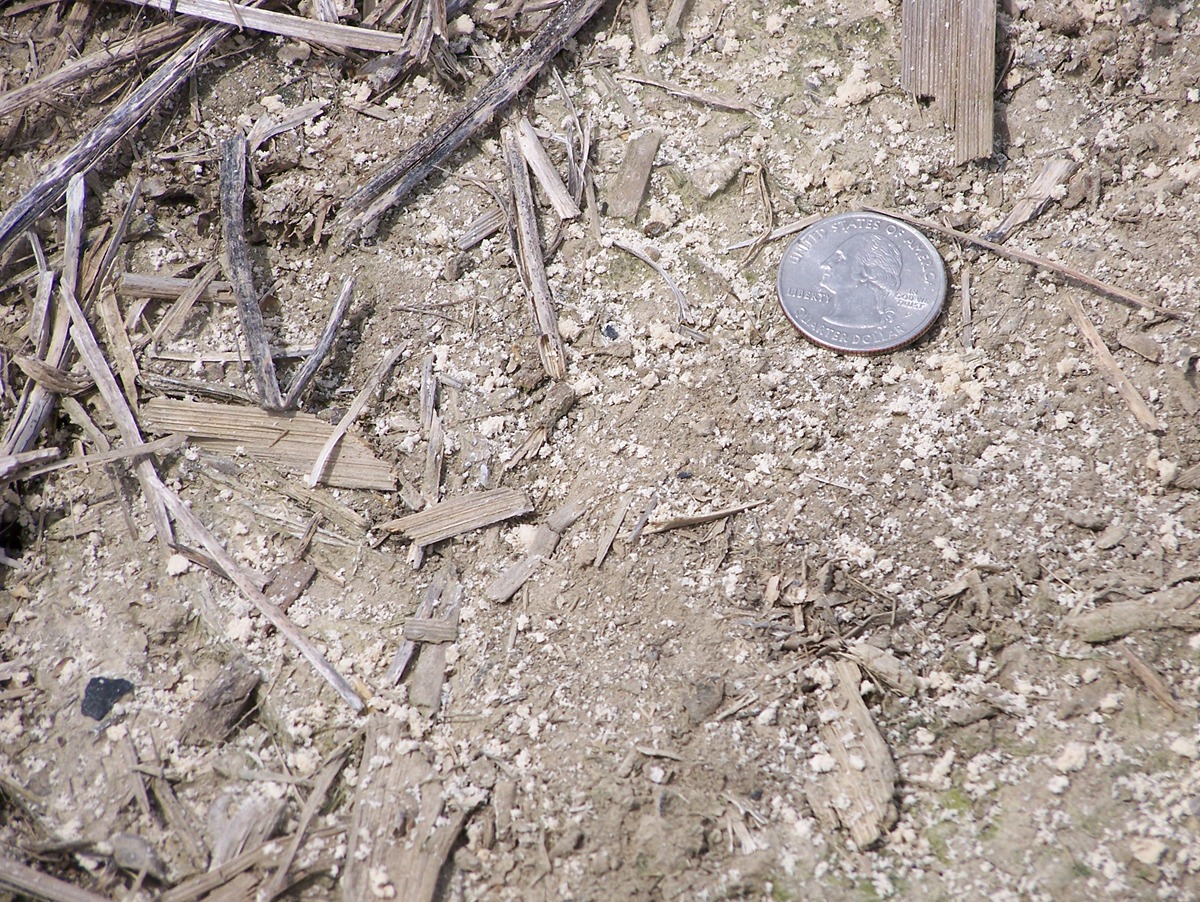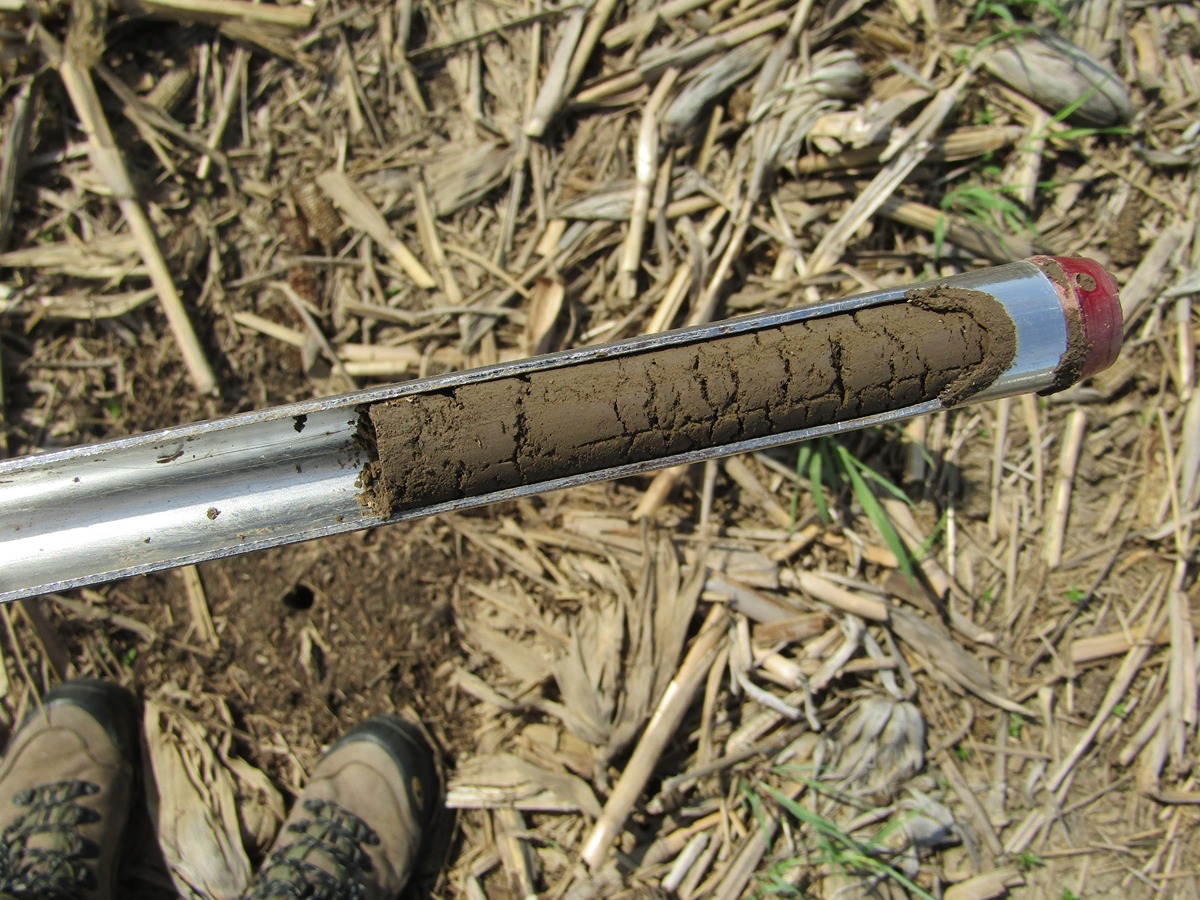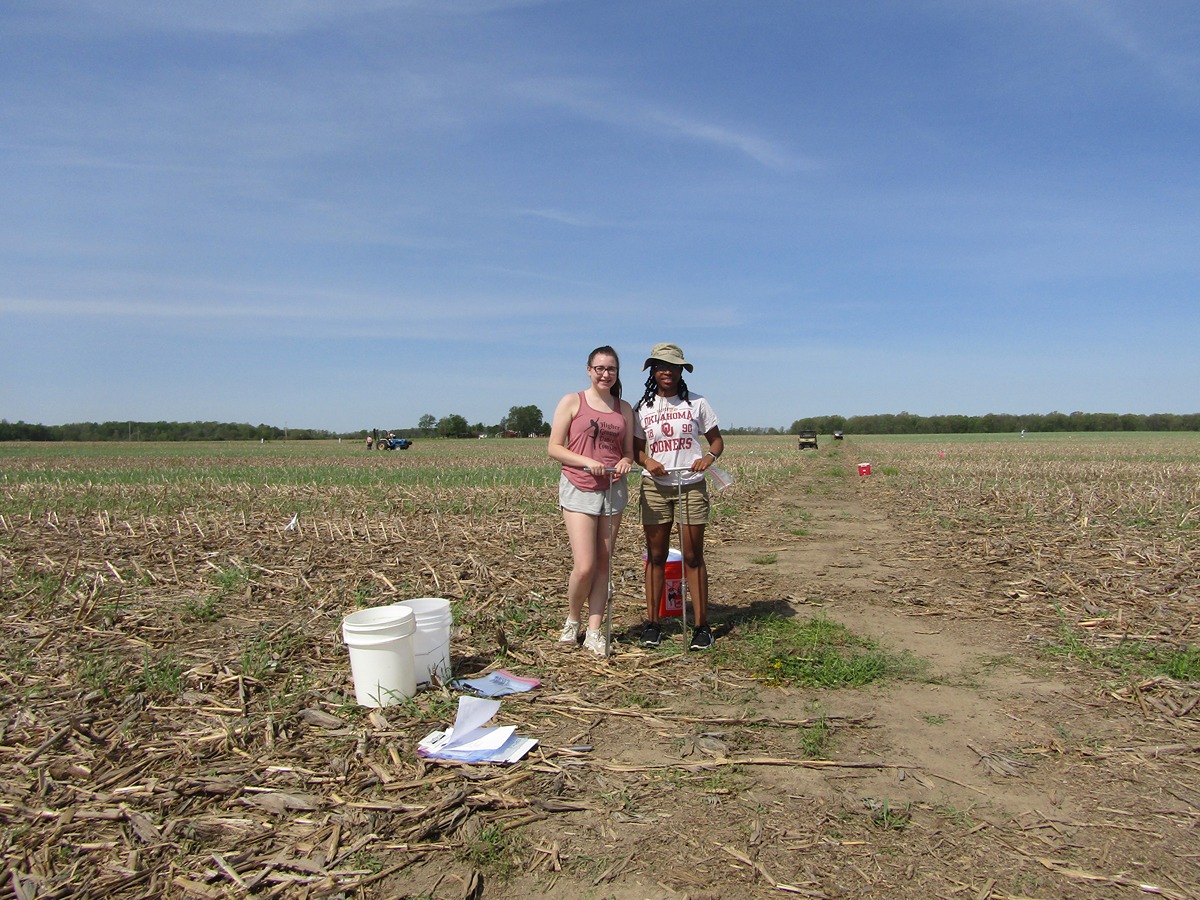How Purdue researchers and the USDA are finding ways to bury carbon beneath our feet
Soils are a rare win-win when it comes to burying the carbon released from burning fossil fuels. Typically, soils that store more carbon are more fertile as carbon helps to retain nutrients and moisture, glue soil particles together to create space for roots and gas exchange and provide energy that fuels belowground life. Burying carbon in agricultural lands will improve fertility while drawing down carbon dioxide from the atmosphere and easing the heat trapping that is driving climate change.
Scientists from Purdue’s College of Agriculture and the United States Department of Agriculture’s Agricultural Research Service (USDA-ARS) are working together to figure out the details of how to better capture carbon in the soil to accelerate the process and, in doing so, help farmers improve soil fertility and tap into markets of carbon offsets. Their research was shaped by a recent global effort to abate another form of atmospheric pollution: acid rain.The history:
In the 1960s and 1970s, acid rain weathered away everything from the corners of limestone buildings to noses from statues, dissolving stone and corroding metal. The phenomena resulted from industrial-scale air pollution released from the burning of coal and volatilization of nitrogen. Oxides of sulfur and nitrogen mixed with clouds and acidified the water that would later fall as acid rain, snow, hail, fog and dust.
Thanks to legislation like the Clean Air Act of 1990, acid rain is no longer a concern in North America. Power plants were required to install technology that scrubs pollutants before they are released into the atmosphere. One of the main scrubbing processes is neutralizing the acidic sulfur with lime—a white, chalky powder made of calcium oxides and hydroxide.
The scrubbing process was so effective that the free sulfur raining down into farm fields dried up. Recently, farmers began to have to add it themselves. Cleverly, they did this by amending their soil with flue gas desulfurization (FGD) gypsum, a cheap and accessible byproduct of sulfur and lime from the scrubbers of power plants.
The use of gypsum as a soil amendment is not new—even Benjamin Franklin used gypsum on a grassy hillside in the late 18th century. The USDA-ARS’s National Soil Erosion Research Laboratory (NSERL) located on Purdue’s West Lafayette campus, develops knowledge and technology to conserve natural resources for future generations. Their scientists have been researching the use of gypsum on soils for several years.
“Gypsum has a lot of agricultural benefits because it’s calcium sulfate,” said Javier Gonzalez, a research soil scientist who’s worked for the NSERL since 2012. “Calcium and sulfur are essential nutrients for plants. And, unlike adding lime alone for calcium, gypsum is more water soluble, so it dissolves faster in the soil. Farmers see the benefits faster.”
Calcium is more than just a plant nutrient. Gonzalez explained that it's an effective mineral for improving the structure of most agricultural soils because of its electrical charge. When gypsum and lime are added to a field, calcium enters the soil as a positively-charged ion, building bridges between molecules that typically repel each other. This interaction is especially important for organic matter, the carbon-rich remnants left on the top of the soil from dead plants and animals. This nutrient-dense material is slowly digested by microbes like bacteria and made available for plants in the form of crucial organic acids with a negative charge. Without positively-charged ions like calcium, organic matter could not stick to the similarly-negative clay particles of soil.
Gonzalez and the NSERL have been working with Roland Wilhelm, a professor of the soil microbiome in Purdue’s Department of Agronomy, to understand the structural and biological changes to soil that come with calcium additions and how calcium’s linkage powers might prove useful for holding carbon in the soil.
The power of the soil microbiome:
Photosynthesis, the process in which plants turn sunlight into energy, requires carbon dioxide. Plants take in this carbon dioxide through their leaves and fix the carbon into their tissues. When plants die and become organic matter, there’s a chance to store that carbon in the soil, both keeping it out of the atmosphere and making fields more fertile.
Wilhelm and his team’s recent work, published in Nature Communications, compared differences in the fate of carbon from dried corn leaves in soils that were artificially enriched with calcium.
“We had two conditions: one where the soil had calcium added, and another where the soil was treated exactly the same but without added calcium,” said Wilhelm. “We used corn leaves that had been labeled with carbon-13, meaning that we grew it with a special carbon dioxide that was slightly heavier than normal carbon. We could trace that heavy carbon isotope through the soil profile and into microbes and onto minerals.”
Their results showed that more organic matter stuck to the mineral surfaces of the soil where calcium was added. The organic matter and carbon could wash out of soils that didn’t have strong enough positive charges to hold them. According to Wilhelm, this capacity to hold carbon is dependent on the soil’s microbiome.
 USDA biological science technician Brenda Hofmann points out details in a soil sample to an undergraduate student (photo credit: Roland Wilhelm).
USDA biological science technician Brenda Hofmann points out details in a soil sample to an undergraduate student (photo credit: Roland Wilhelm). Millions of microscopic creatures live in every handful of soil and have a major impact on the decomposition and cycling of nutrients. Soil bacteria use the organic matter as a food source and get energy from it, illustrating calcium’s importance in the soil microbiome and carbon cycling. The experiment tracking carbon through the soil also displayed major changes in the types of microbes able to access the calcium-modified carbon.
Wilhelm explains, “Some bacteria are more efficient at using carbon for growth, returning less back to the atmosphere. We found that calcium encouraged these efficient biomass-builders.”
In Wilhelm lab’s recent paper in Environmental Microbiology, the authors argue that soil management practices facilitating efficient carbon-use, like the addition of calcium, can provide low-cost tools to combat climate change.
However, that picture has become more complicated over the years since fewer scrubbers produce FGD gypsum. Gypsum is also used heavily in construction for drywall, increasing competition for the resource and leading to shortages.
Gonzalez said there is still reason to believe that soils are essential for combating climate change. “While gypsum is getting harder to find, there are other practices to increase organic matter in soils and keep carbon there. Conservation tillage keeps carbon from being oxidized and released into the atmosphere. Cover crops add more carbon into the soil, as well as retain nutrients and prevent erosion.”
Soil is the foundation of agriculture, facilitating the growth of crops and pastures around the world. Research in soil amendments, management practices and their impact on the microbiome may unlock possibilities to defer climate change and more.










